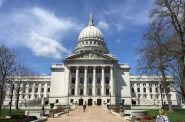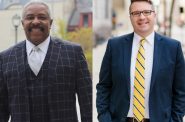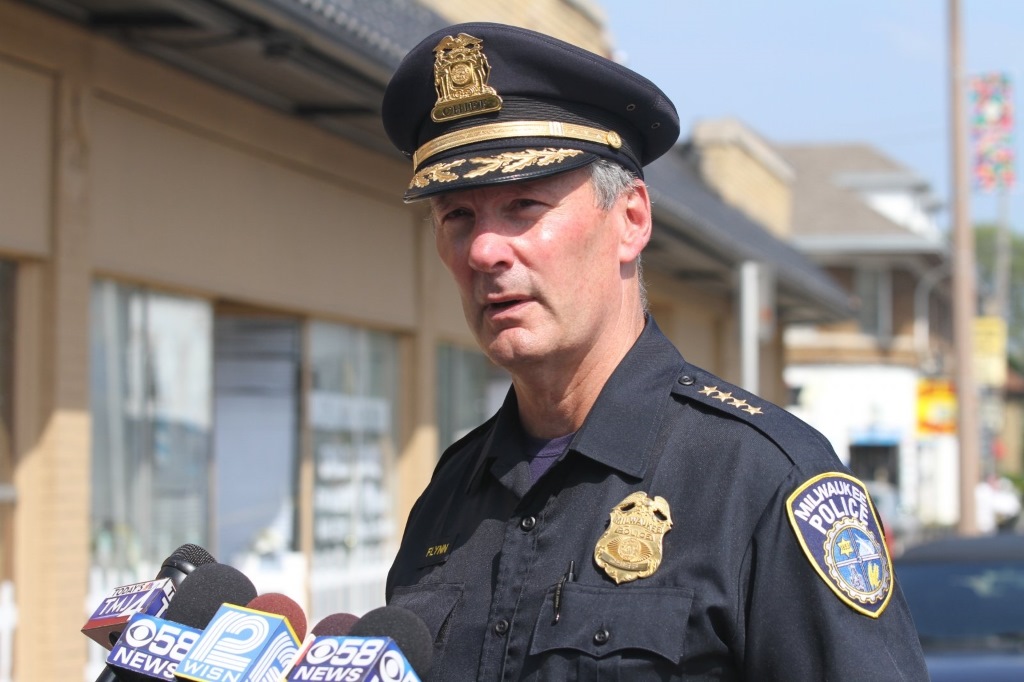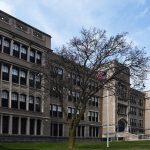10 Lessons After Dallas
How can Milwaukee and the nation assure that black lives and blue lives matter?
The good news is that President Barack Obama and former President George W. Bush will both address a memorial service in Dallas today. It sends a signal that the issue is not a partisan one.
The bad news is that Americans are inevitably being pushed to take a stand on one side or the other, to condemn Black Lives Matter or condemn reckless police officers, to focus on the African American men wrongly slain by police in Minnesota and Baton Rouge or instead emphasize the Dallas officers assassinated while trying to protecting the public. At times like this it’s important to move beyond the emotions and consider some useful facts that may help us understand policing nationally and in Milwaukee:
1. The data is woefully incomplete. The lack of research on police shootings is “ridiculous” and “embarrassing,” as FBI Director James Comey has declared. The data is almost useless, one analysis found, because police departments may not report it at all, or offer incomplete data and there is no uniformity to how its presented. The FBI has established a uniform way of reporting major crimes; maybe we need a national guideline for reporting the use of force.
2. Use of force by police is rare. However inadequate the data, all evidence suggests the use of force happens rarely, from as low as one percent to two percent of the time. The Milwaukee Police Department, which does an annual report on use of force, had less than 700 such incidents in 2015.
3. Police use force more often on minorities. A new study by the Center for Policing Equity compiled more than 19,000 use-of-force incidents by police officers representing 11 large and midsize cities and one large urban county from 2010 to 2015 and “found that the disparity in which African-Americans were subjected to police force remained consistent across… the use-of-force continuum — from relatively mild physical force, through baton strikes, canine bites, pepper spray, Tasers and gunshots,” the New York Times reported. “The study found that the overall mean use-of-force rate for all black residents was 273 per 100,000, which is 3.6 times higher than the rate for white residents (76 per 100,000)… For those who were arrested, the mean rate of use of force against blacks was 46 for every 1,000 arrests, compared with 36 per 1,000 for whites.”
4. But shootings may not happen more often to minorities. Another recent study also found police used force disproportionately against minorities — except the most lethal form of force, police shootings. But the study had two limitations: the data came from just three states and departments that volunteered to provide data, and might not be representative of the nation. And it examined all shootings rather than the kind of egregious examples that occurred in Baton Rouge and suburban St. Paul. If there are whites killed after being stopped for minor issues like a broken tail-light, we haven’t seen the videos.
5. All police departments are not the same. America’s federalist system means that different states may have different rules for departments and within each state cities may vary. As Milwaukee Police Chief Ed Flynn has said in response to last week’s events, “Police officers in Milwaukee should not be judged by what happened in another jurisdiction.”
6. Assaults on police officers are rare. “Over the last ten years, an annual average of 51 officers were feloniously killed in the line of duty according to data collected by the FBI,” The Atlantic has reported. “Violent attacks on officers… are few and far between when you take into account the fact that police officers interact with civilians about 63 million times every year. In percentage terms, officers were assaulted in about 0.09 percent of all interactions, were injured in some way in 0.02 percent of interactions, and were feloniously killed in 0.00008 percent of interactions.”
7. Most police do not get adequate training. The killing of Philando Castile in suburban St. Paul suggests a situation where the officer seemed poorly trained and needed a better protocol to handle someone with a permit to carry a gun. As of the 1980s, training of officers ranged from 120 to 1,000 hours and that hasn’t changed. The average today is about 600 hours. Many nail technicians get more training; Alabama requires 1,200 hrs training. In Missouri, barbers get more training than St. Louis police officers.
8. Police have an increasingly tough job. The concentration of poverty and crime in urban neighborhoods that lack jobs, decent schools, even grocery stores, has put huge pressure on police officers. As Dallas Police Chief David Brown put it, “We’re asking cops to do too much in this country.” Brown “noted that Dallas police have been asked to shoulder every single ‘societal failure,’ from mental health to drug treatment to, even, the failure of the public school system and the fact that kids in southern Dallas are being raised by single moms,” the Dallas News reported.
In an interview on PBS, Flynn offered an eloquent take: “Our central cities, our communities of disadvantage characterized by intergenerational poverty have the highest rates of violence for what we like to call the industrialized society. We’re the most heavily armed, most violent society in the industrialized West. And it is our African-American communities of disadvantage that suffer the most from it. Their partners in dealing with it are the police, who are often placed in difficult or ambiguous circumstances and sometimes do the wrong thing, but overwhelmingly are the community partners. We have been delegating America’s social problems to the police.”
9. Concealed and open carry adds difficulties for police. As Democratic congressman and former police officer Dave Kerner has noted, the preponderance of firearms affects officers’ mindset when on patrol: “Stress levels go up, which not only has a negative effect on an officer as a whole, but also hurts any interaction between law enforcement and the community…we’re constantly evaluating whether the person we’re interacting with has a weapon.”
Brown noted the problem for Dallas police handling the protest where the sniper fired on them because the event had attracted “20 or 30 people” who “showed up with AR-15 rifles slung across their shoulder…They were wearing gas masks… They were wearing bulletproof vests and camo fatigues, for effect, for whatever reason.” Amid the rapid fire confusion, police viewed them as suspects, but they were actually Texans exercising their right to carry arms.“Doesn’t make sense to us, but that’s their right in Texas,” Brown said.
10. Black Lives Matters protestors have constitutional rights. The same as abortion protestors or any other political protestors. A peaceful protest is legal. And if BLM protestors do break the law (which all accounts suggest has been rare), then police can arrest them.
Murphy's Law
-
Is Legislature Biased Against Working Class?
 Apr 4th, 2024 by Bruce Murphy
Apr 4th, 2024 by Bruce Murphy
-
Associated Press Will Decline in Wisconsin
 Mar 27th, 2024 by Bruce Murphy
Mar 27th, 2024 by Bruce Murphy
-
City Attorney Race Is Vitally Important
 Mar 25th, 2024 by Bruce Murphy
Mar 25th, 2024 by Bruce Murphy

















6. Assaults on police officers are rare
Despite despicable rhetoric from many on the right re: Obama somehow being directly responsible for police officers being shot, less have been shot during his two terms than were shot while George W. Bush was president. It’s extremely safe to be a police officer right now.
4. But shootings may not happen more often to minorities
The Washington Post reported that while more whites are shot, when you adjust for population size minorities are 2.5 times more likely to be shot.
Good reporting and analysis, Bruce. I hope you might also report on the role of “community policing” to the extent it is being done in Milwaukee. I’ve been reading about it for several years being used in major cities such as Boston, and now hearing about its role in Dallas. It takes a holistic, proactive approach.
http://www.theatlantic.com/politics/archive/2016/07/dallas-police/490583/
6. Vincent, you’re right… the statistical evidence for any kind of war on cops is about as strong as the evidence for any kind of large scale racism on the part of cops and how they interact with people. The total interactions are so huge and the incidents of outright and deliberate killing of anyone is so minuscule. The Rhetoric on these subjects far outweigh any reality.
4. What happens when you adjust for proportion of crimes committed by any particular race? I would think interactions and thus incidents should be in line with that. Are we out of whack in terms of this proportion?
I agree, and I think Obama’s speech today in Dallas was beautiful and spot on. I didn’t hear Bush’s but I read some excerpts that I really like.
Here’s the story where I got that info AG: https://www.washingtonpost.com/news/post-nation/wp/2016/07/11/arent-more-white-people-than-black-people-killed-by-police-yes-but-no/?utm_term=.0b30fa92288a
AG: From the Center for Policing Equity report that Murphy cites: “racial disparities in police use of force persist even when controlling for racial distribution of local arrest rates.”
Police also need much better training in dealing with citizens who might have mental health issues. An astonishingly large portion of those incarcerated for violent crimes have untreated mental illness – and a significant number of people police deal with daily do, as well. This is unsurprising: mental health is covered by insurance less frequently and less thoroughly than physical maladies – and of course even with ACA the poor tend to be more likely to have no insurance coverage whatsoever.